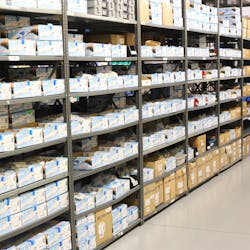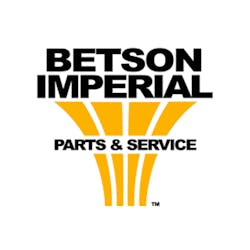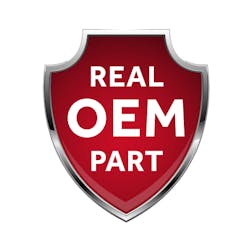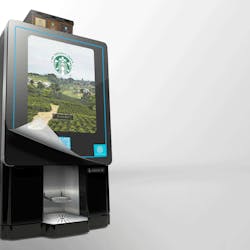Last month, we examined how federal regulations certify quantifiable energy savings for vending machines. In addition to this, there are other improvements vending operators can make to reduce energy use in their locations. Namely, the use of light-emitting diode technology and energy saving devices.
Light-emitting diode (LED) technology has led to
the production of a comparatively small lighting element that has a long useful life, easy installation, features energy conservation, and no heat diffusion. The brightness of an LED makes them a feasible alternative to fluorescent bulbs.
LED elements, which project a bluish-white light, can be used in combination with reflective materials to provide brighter, superior lighting at a lower cost and with fewer environmental considerations. Equipment suppliers claim LED lighting brings a higher level of presentation to machine contents. Operators must be certain to investigate the power of the LEDs prior to commitment to install. Tests have shown that a supplier may develop an LED strip to provide an enhanced level of brightness without necessarily considering energy efficiency.
LED PANELS SPECIFICALLY FOR VENDING MACHINES
Energy saving LED light strips designed specifically for vending machines are available from several manufacturers. The light panels are configured so that a connector can be attached to the machine’s existing harness mechanism, and since they do not contain a filament, the need for a ballast is eliminated.
LED strips may be packaged in protective, clear acrylic tubing to safeguard the elements by increasing durability. Other LED suppliers do not package the lamps in strips, believing that the mounting fixtures of certain vending machines provide sufficient protection.
LED lights are energy efficient and have an estimated life of more than 10 years of continuous service (100,000 hours). Brightness, however, does diminish over the life of an LED lamp. In addition, LED lights create minimal heat and do not project ultraviolet (UV) radiation, which could negatively affect vended food products.
LED lamps are affected by low temperatures like fluorescent lighting and turn on to full brightness. Heat does degrade LED lifetime, so LED strips must be designed to adequately dissipate the heat generated.
Also, unlike fluorescents, LED lights are not subject to operational fluctuations and flickering that can pose a threat to other electronic components and products within the vending machine.
LIGHTING PRESENTS AN ONGOING COST
The lighting requirements for a vending machine involve more than just the initial expense of its light bulbs. In addition to the direct cost of lighting is the ongoing cost of replacement products, service/installation personnel, and loss of revenue while the machine sits dark.
The initial expense of fluorescent bulbs compared to LED lights varies significantly, as do the life expectancies of each product. Continuously lit fluorescent light bulbs have an average life of 11 to 13 months while an LED element is projected to burn seven to 10 years.
LEDS ARE PREFERABLE TO FLUORESCENT LIGHTS
When a long-life source is selected, the average cost of the fixture leans heavily in favor of an LED installation. Industry experts estimate the cost to replace machine installed fluorescent light bulbs around $60 to $90 each, given the cost of the replacement bulb, technician’s time and travel expenses. This amount when extended over a 5-year period can equate to several hundred dollars.
An LED light strip panel, capable of replacing a fluorescent bulb, is available at a cost of $40 to $60. The LED strip is expected to surpass five years, but for comparison purposes, carries only its initial cost as it should not require replacement as it is expected to surpass five years of service. It is for this reason that some vending equipment suppliers suggest replacing a single fluorescent bulb with multiple LED strips and mirror-like reflectors.
Such replacement can lead to superior machine brightness, while providing cost savings over the comparable expense of single fluorescent light bulbs. A deluxe LED kit, for example, may cost $150 to $175 initially, but will be expected to provide many years of continuous service as compared to the expenses associated with annual fluorescent bulb replacement.
LED lights consume less energy, reduce carbon emissions, have a longer life, and result in less waste. The lifespan of an LED can be affected by the temperature of its surroundings as well as the energy volume it consumes. From an operational perspective, some vending operators report noticeable savings associated with LED replacement of fluorescents.
For example, in a comparative study, an operator reported that the placement of LED strips in a food machine (with a compressor and motion sensor) consumed 2 to 2.5 fewer amps while a similarly outfitted snack machine (with no compressor) drew correspondingly fewer amps. These savings can amount to significant yearly savings. LED lights provide a platform for enhanced product presentation, given brighter lighting as well as benefits associated with energy conservation.
RETROFIT KITS AVAILABLE FOR LED LIGHTS
LED lighting packages are available for retrofitting in older machines and do not require re-engineering or alternate energy sourcing. Several industry suppliers, including InOne Technology, Vendors Exchange International Inc., and others offer retrofit kits that are compatible with multi-drop bus (MDB) compliant machines and offer uncomplicated installation.
In addition to LED lights and reflector combinations, the installation of a motion sensing (infrared) switch can be used to conserve energy and extend LED life by dimming the light strip when no one is detected in proximity (predetermined radius).
Similar to other sensing devices, the infrared sensor will return the light level to its full potential when occupancy is sensed. LED lighting packages (basic and deluxe) are available from select machine manufacturers as an upgrade option on new vending machines. Labor savings resulting from fewer service calls as well as replacement part costs should also be included in a cost comparison analysis.
MOTION DETECTING SENSOR CONTROLS COMPRESSOR
The Department of Energy has a responsibility to establish energy conservation standards for various consumer products and commercial and industrial equipment, including refrigerated bottled or canned beverage vending machines. An EnergyMiser is a product that can be applied to manage energy consumption in beverage vending machines and coolers by regulating the compressor unit.
A vending machine constantly uses electricity 24 hours a day, seven days a week. Even when there are no customers surveying its contents or purchasing product, the machine continues to draw energy.
POTENTIAL SAVINGS OF $300 PER YEAR
Some industry analysts estimate that vending machines typically consume between 7 and 14 kWh/day (kilowatt hours per day) depending on machine capacity and complexity. At a conservative kWh cost rate, vending machine savings may approximate $300 a year when equipped with an EnergyMiser product.
USA Technologies, the producer of EnergyMiser products, claims energy savings can be in excess of $100 per year per machine, thereby paying for itself in about 12 months. The EnergyMiser product line is termed “plug-and-play” technology that can begin saving power immediately.
EnergyMiser products are estimated to have an average life span of 12 years. Other benefits include reduced vending machine run time and lighting burn time, resulting in less wear and tear, thereby extending the machine’s life.
The EnergyMiser product line consists of VendingMiser, CoolerMiser, SnackMiser, and PlugMiser. It is important to note that adding a miser device to older equipment (pre-2003) is not likely to qualify the machine for an Energy Star rating despite possible enhancements in energy efficiency.
VENDINGMISER MONITORS LOCATION ACTIVITY
The VendingMiser is an add-on product that may help reduce the energy consumption of a cold beverage vending machine through the use of sensors. By using an occupancy (motion) sensor to conserve electricity (power down) the device has the ability to adjust the machine’s lights and compressor.
A sensor is then applied to re-establish sufficient power so the machine can maintain its inventory at a desired temperature without excessive use of energy. The installation and application of VendingMiser is invisible to the consumer as the machine is well lit whenever someone is detected within proximity of the machine.
According to USA Technologies, the VendingMiser has been shown to provide average energy savings of 35 to 40 percent, translating in a savings of $55 to $130 in annual electricity cost for each machine. It is important to note that the VendingMiser has also been deemed “RoHS” compliant. RoHS is a directive that restricts the use of hazardous materials in electrical products in an effort to reduce the stream of hazardous waste sent to landfills.
The refrigerated vending machine is the most ubiquitous commercial refrigerated device in the marketplace, and can cost upwards of $500 annually to operate. USA Technologies claims it has the capability of reducing energy consumption by as much as 30 to 46 percent per refrigerated beverage machine with a payback of less than 12 months and a 12-year life span.
The EnergyMiser works by having sensors monitor the ambient room temperature surrounding a vending machine and check for motion as an indicator of physical presence (occupancy).
Next month, we will further examine energy savings’ impact on client relations.
For more information, contact:
InOne Technology, (410) 666-3800, www.inonetechnology.com
USA Technologies Inc., (800) 633-0340, www.usatech.com
Vendors Exchange International Inc., 800-321-2311, www.veii.com




